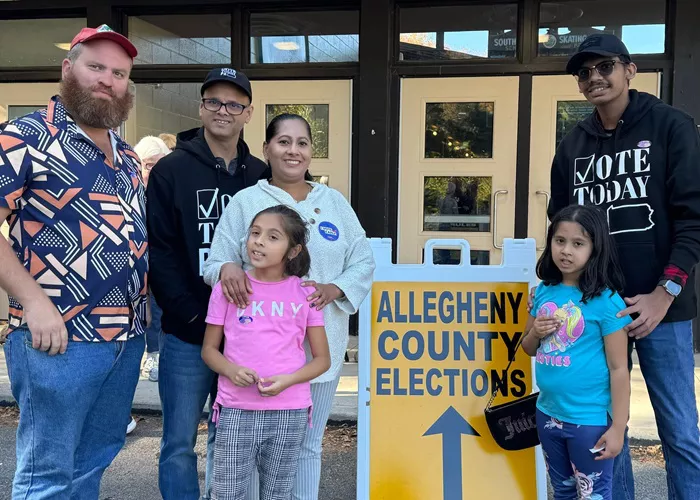PITTSBURGH, PA — Today, Pittsburgh observes the sixth anniversary of the Tree of Life Synagogue Massacre, which claimed the lives of 11 people in what stands as the deadliest antisemitic attack in U.S. history. This tragedy unfolded in Squirrel Hill, the same neighborhood where I grew up.
Each year, I grapple with capturing the horror of that day. As a Jewish reporter, I had heard of an active shooter situation that morning and volunteered with The Guardian to cover it. The ordeal, a standoff that stretched for over an hour, saw hundreds of shots fired between police and the gunman, who was barricaded on the synagogue’s top floor. Seeing live updates from friends on Twitter about the gunfire while en route to the scene was terrifying. The trauma from that day has left lasting scars, manifesting in flashbacks and nightmares.
I have covered violent conflicts abroad, including police confrontations with drug traffickers in Rio de Janeiro, but witnessing a SWAT team storming a synagogue in my peaceful childhood neighborhood was profoundly jarring.
Healing began that evening when thousands gathered in Squirrel Hill, a few blocks from the synagogue, to march in solidarity. Chanting slogans like “Safety through Solidarity,” the crowd advocated for immigrant rights in the spirit of Mr. Rogers, a neighborhood icon.
For some, this response may seem disconnected from the massacre. But the shooter, Robert Bowers, explicitly targeted the synagogue for its support of the Hebrew Immigrant Aid Society, an organization that aids refugees. The belief that immigrants were a threat to the community fueled his attack. Yet, the annual memorials for the massacre often omit these motivations, instead presenting the tragedy as an act of antisemitism alone.
Feeling that these memorials have strayed from the event’s true context, I’ve chosen not to attend them. Instead, last week, I joined an early voting event hosted by Lhotshampa refugees, a Nepalese-speaking ethnic group from Bhutan who fled genocide. This community, now settled in Pittsburgh, has been a part of the Mon Valley, where the shooter once lived.
At the event, I shared Nepalese food, witnessed dancing, and enjoyed a lively atmosphere in a church hall — experiences that would have been rare in Pittsburgh a decade ago. From there, we went together to the South Park ice-skating rink to cast our votes. Navigating the paperwork for early voting was confusing, but these refugees, many of whom were voting for the first time, had been well-prepared. Their guidance helped me cast my vote without any issues.
After voting, we took a group photo, capturing a shared moment between a Jewish American and refugees who fled their homeland. Despite different backgrounds, we all embraced the privilege of voting as Americans and building a community together.
Today, some may try to use the Tree of Life Massacre to justify harm against Palestinians. But this would be a distortion of the events at the synagogue. The attack was driven by hatred toward those who support immigrants — people like the Lhotshampa refugees who stood by me as I cast my vote.
My grandparents, World War II veterans and anti-Zionists, taught me that as Jews, our duty is to stand up for the oppressed. On this anniversary, let us remember that the lives lost at the Tree of Life were a testament to this commitment to justice for immigrants.
May the memory of those who died in Pittsburgh inspire ongoing support for immigrants’ rights.
Related topics:
- Trump labels the U.S. a ‘garbage can’ during immigration speech in Arizona.
- Canada Reduces Immigrant Intake Due to Public Concerns About Immigration
- Immigrants Boost the US Economy by Sending Billions Back Home


